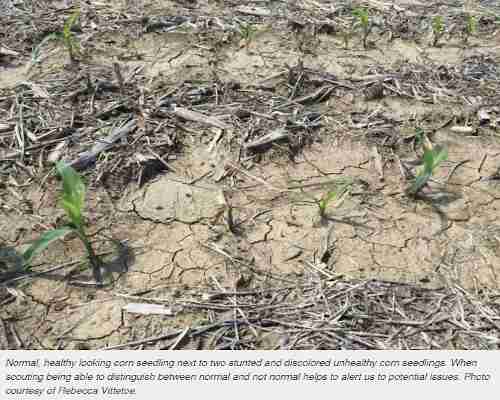By Rebecca Vittetoe and Meaghan Anderson et.al
With planting wrapping up and crops beginning to emerge, now is the time to start scouting fields regularly throughout the growing season for any potential issues. Scouting fields and monitoring crops throughout the growing season can help you make more informed management decisions and stay on top of potential issues that may come up during the growing season. Even if some issues cannot be fixed, regular scouting can help us better understand what happened in the field and make adjustments to reduce issues in the future. This article will discuss the basics of crop scouting as well as crop scouting tools and resources.
Crop Scouting Basics
Normal vs. Not Normal: It is important to be able to distinguish between what a normal plant looks like (above and below-ground) and what a not normal plant looks like. Understanding and recognizing crop growth and development stages provides key insight in determine if things are on track or are being influenced by environmental conditions.
Additionally, other key symptoms that tell us something is not normal with a plant include the plant color; crinkling of leaves; loss of leaf tissue; wilting; and pinched, stunted, or deformed root systems.
